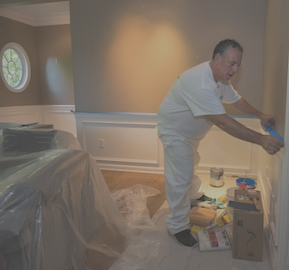What Is The Best Paint For Decks?
What Is The Best Paint For Painting Decks?
Since decks encounter a lot of foot traffic, we recommend using stain not paint on decks. PPG’s top of the line stain is ProLuxe (formerly Sikkens) and comes in a transparent, semitransparent, or solid finish. It is necessary to clean your deck before applying stain as dirty wood will alter the color of the stain.
Pick a type of paint that provides a natural finish. A thick coating of oil-based paint helps you fill in cracks and gaps on your deck surface, creating a high-quality aesthetic. However, oil-based paints absorb UV rays from the sun, which means you need to apply a new coat to your deck every year so it is not the ideal option.
Don’t paint your deck if it’s recently been oiled, either. The paint won’t stick to the surface, no matter how hard you try. You’ll need to use a paint remover to get rid of the oil first, and then sand the wood before you apply a new coat.
Acrylic paint is a better option. It has a protective UV-resistant film, so it requires less maintenance than oil paint. Acrylic paint works great on all types of wood decks — from lumber to cedar to redwood — and if you follow the manufacturer’s instructions and wait for a couple of days for your deck to dry before you apply the second coat, you shouldn’t have any trouble.
Clean up is a breeze when using acrylic paint, too. You won’t need any solvents, but just good old soap and water.
A type of paint with acrylic latex resins expands and contracts at different temperatures. However, the latex binder in the paint prevents it from cracking in hot and humid weather. The result is a better, longer-lasting paint finish for your deck. Acrylic paint is also mildew-resistant, so that’s one less thing to worry about.
You need to use a good primer before you apply acrylic paint to your deck. That’s because wood is susceptible to “bleeding,” a process where the surface of the deck becomes stained and blotchy because of water damage.
Ready to get started? Paintzen is here to help you every step of the way.
What Tools Do I Need When I Paint A Deck?
Painting a deck requires a particular set of tools. First, you need tools for sanding the deck, followed by tools for filling cracks. Finally, you need other supplies for applying your primer and paint.
An electric sander is the most appropriate tool for preparing a deck for painting. You can use sandpaper wrapped around a hand-held block, but it will take much longer to sand down a large deck using this basic tool. An electric sander allows you to quickly sand large areas of the wood to strip away old paint or stain and create a fresh surface that is ready to receive the new primer.
If there are any cracks in your deck, you’ll need to fill them using an exterior-grade putty before you can start painting. Use a putty knife to push the putty into the cracks and scrape away the excess. When the putty is completely dry, sand these areas again to remove any unevenness and ensure the deck surface is perfectly flat.
Use a paintbrush to apply an oil-based primer to the awkwardly shaped areas of the deck, such as the gaps between boards and the areas around posts. For large, flat areas of the deck, it is quicker and easier to use a paint roller to apply the primer. Leave the primer to dry for as long as specified in the product instructions. Note that, if the weather is cold or humid, the primer may take longer to dry than in a dry, hot climate.
You are now ready to start painting. You’ll want to use a high-quality, oil-based paint that is suitable for outdoor use. Again, use a paintbrush to apply the paint to hard-to-reach areas and a roller to quickly cover large areas.
Choosing the right primer and paint is very important if you want your newly painted deck to look good for years to come. If you’re ready to try this DIY painting job for yourself, contact Paintzen to get all the materials you need. Alternatively, you can request a quote for a team of our professionals to paint your deck, too.
NEED A LITTLE MORE INSPIRATION?





